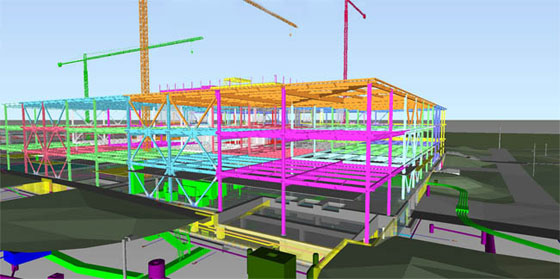
Construction risks are considered as one of the most crucial factors for any construction jobsite. With the emergence of BIM, it becomes easier for construction professionals to generate 3D site safety plan as well as preserve safety plans electronically.
With BIM, the construction professionals can view and illustrate jobsite conditions for review and recognition of hazards. BIM can easily manage various issues like wrong work planning, deficient communication with workers and failure of safety training.
1. Visually examine jobsite conditions: BIM is used to get visual perception of a site briefly as well as the safety status all through the planning stage, prior to commencement of the actual construction. It facilitates the new workers to be familiar with the construction site safety measures and construction processes without difficulty.
2. Recognize possible hazards: As BIM offers 3D visualization, it becomes easier to generate 4D sequence and construction activity planning via site logistics. One can easily detect the possible hazards - specifically those distinctive to an individual project. So, with 4D scheduling feature, a characterized safety plan for workers is developed.
3. Exterminate risks and enhance safety conditions: By applying BIM, each risk can be highlighted independently and workflows can be organized efficiently which facilitate the each worker to optimize their tasks and get rid of possible risks.
More info: http://archinect.com/

Image Courtesy: e-architect.co.uk